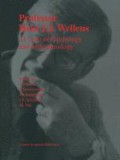Abstract
The 12 lead electrocardiographic (ECG) findings were reviewed in 17 patients having two or more accessory pathways as documented during electrophysiologic study in all 17 patients and by intraoperative mapping in 8.
Twelve patients had findings suggesting the presence of more than one atrioventricular (AV) pathway. These were (1) more than one P wave configuration during orthodromic circus movement tachycardia (four patients); (2) a ‘mismatch’ between the location of the ventricular and atrial ends of the accessory pathway as assessed when comparing exclusive AV and ventriculo-atrial conduction over the accessory pathway during antidromic and orthodromic circus movement tachycardia, respectively (seven patients); (3) atrial fibrillation showing more than one pre-excitation pattern (six patients); (4) a spontaneous change from orthodromic to antidromic circus movement tachycardia and vice versa (two patients); (5) a spontaneous change from one type of antidromic tachycardia to another (two patients); and (6) a change in pre-excitation pattern after administration of a drug that prolongs the anterograde refractory period of the accessory pathway (three patients).
The retrospective nature of this study does not allow conclusions as to the true value of the ECG in predicting the presence of more than one accessory pathway. This issue needs to be evaluated in a prospective study.
Access this chapter
Tax calculation will be finalised at checkout
Purchases are for personal use only
Preview
Unable to display preview. Download preview PDF.
References
Colavita PG, Packer DL, Pressley JC et al.: Frequency, diagnosis and clinical characteristics of patients with multiple accessory atrioventricular pathways. Am J Cardiol 59: 601–606, 1987.
Prystowsky EN: Diagnosis and management of the pre-excitation syndromes. Curr Probl Cardiol 13: 277–310, 1988.
Wellens HJJ, Brugada P: Value of programmed stimulation of the heart in patients with the Wolff-Parkinson-White syndrome. In: Josephson ME, Wellens HJJ (eds), Philadelphia, Tachycardias, Lea & Febiger, 199–221, 1984.
Wellens HJJ, Brugada P, Penn OC: The management of preexcitation syndromes. JAMA 257: 2325–2333, 1987.
Gallagher JJ, Pritchett ELC, Sealy WC, Kasell J, Wallace AG: The pre-excitation syndromes. Prog Cardiovasc Dis 20: 285–327, 1978.
Milstein S, Sharma AD, Guiraudon GM, Klein GJ: An algorithm for the electrocardiographic localization of accessory pathways in the Wolff-Parkinson-White syndrome. PACE 10: 555–563, 1987.
Lemery R, Hammill SC, Wood DL, et al.: Value of the resting 12 lead electrocardiogram and vectorcardiogram for locating the accessory pathway in patients with the Wolff-Parkinson-White syndrome. Br Heart J 58: 324–332, 1987.
Lindsay BD, Crossen KJ, Cain ME: Concordance of distinguishing electrocardiographic features during sinus rhythm with the location of accessory pathways in the Wolff-Parkinson-White syndrome. Am J Cardiol 59: 1093–1102, 1987.
Wellens HJJ, Bär FW, Gorgels AP, Vanagt EJ: Use of ajmaline in identifying patients with the Wolff-Parkinson-White syn-drome and a short refractory period of their accessory pathway. Am J Cardiol 45: 130–133, 1980.
Wellens HJJ, Braat SH, Brugada P, Gorgels AP, Bär FW: Use of procainamide in patients with the Wolff-Parkinson-White syndrome to disclose a short refractory period of the accessory pathway. Am J Cardiol 50: 921–925, 1982.
Author information
Authors and Affiliations
Editor information
Rights and permissions
Copyright information
© 2000 Springer Science+Business Media Dordrecht
About this chapter
Cite this chapter
Wellens, H.J.J., Atié, J., Smeets, J.L.R.M., Cruz, F.E.S., Gorgels, A.P., Brugada, P. (2000). The electrocardiogram in patients with multiple accessory atrioventricular pathways. In: Smeets, J.L.R.M., Doevendans, P.A., Josephson, M.E., Kirchhof, C., Vos, M.A. (eds) Professor Hein J.J. Wellens. Springer, Dordrecht. https://doi.org/10.1007/978-94-011-4110-9_45
Download citation
DOI: https://doi.org/10.1007/978-94-011-4110-9_45
Publisher Name: Springer, Dordrecht
Print ISBN: 978-94-010-5799-8
Online ISBN: 978-94-011-4110-9
eBook Packages: Springer Book Archive

